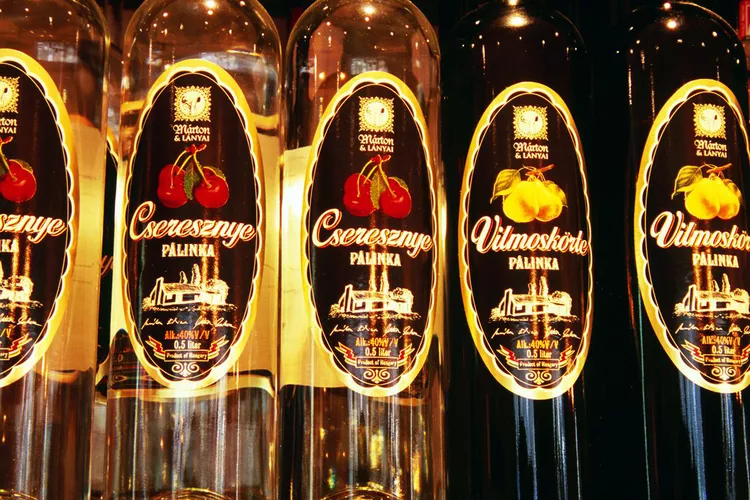Summary
What is Pálinka?
Pálinka, a Hungarian fruit brandy, is a strong alcoholic beverage renowned for its potency, flavor, and aromatic quality. This delightful drink can be easily found across Hungary, sampled at local restaurants, and occasionally ordered online. Additionally, many enthusiasts also engage in crafting their own pálinka, contributing to the numerous festivals in Budapest and other regions of Hungary, celebrating pálinka as a cherished national delight.
While it is certainly easy to indulge when consuming pálinka, those who produce it do not typically aim for intoxication. Instead, the art of pálinka-making is highly regarded in Hungary, akin to the esteemed practice of producing Hungarian wine, and it is often enjoyed as a refined way to commence or conclude a meal.
Authentic Pálinka
Genuine pálinka originates exclusively from Hungary, crafted using fruits that are native to the fertile Carpathian Basin region of Europe. Its rich history spans centuries, with ancestors of modern Hungarians undoubtedly harvesting sun-ripened fruits for fermentation and distillation. Pálinka boasts a robust alcohol content ranging from 37% to 86%, and authentic versions showcase the fruit’s natural qualities without additional sugars, flavors, or colors.
The designation “pálinka” is safeguarded by both Hungarian and EU legislation; thus, producers outside Hungary are prohibited from using the term for their products, although they may create similar fruit brandies under different names.
This exquisite spirit is commonly made from sweet orchard fruits, including plums, apricots, and cherries. Traditionally, pálinka is served at room temperature, as cooler temperatures can mute its delightful aroma and taste. Typically enjoyed from a small, tulip-shaped glass, many prefer it as a digestif following a meal.
Celebrating Pálinka
Pálinka holds a significant place in Hungarian culture, with festivities dedicated to it, as well as rankings and assessments during various competitions. Some individuals even pursue pálinka-judging courses, honing their skills to professionally evaluate fruit brandies. These judges possess expertise in distinguishing between different pálinkas, assessing their unique flavors and fragrances.
In Budapest, two notable festivals that celebrate pálinka are the Pálinka and Sausage Festival in October and the Pálinka Festival in May. These events present an excellent opportunity to sample a diverse array of brandies crafted by producers from across Hungary.
Pálinka-Making Process
The journey of pálinka begins with the harvesting of fruits. Historically, making fruit brandy served as a means to utilize surplus fruit at the season’s end. Upon gathering, the fruit is placed within a vessel or barrel, stirred to initiate fermentation, which occurs over several weeks.
Once fermentation is complete, the fruit mash undergoes a distillation process. Although commercial producers employ large, modern distillers, many still choose to create pálinka in their backyards using traditional fire and copper cauldrons. Following the initial distillation, pálinka is distilled a second time, which enhances its flavor and potency.
Buying Pálinka
Pálinka is available in tall or round bottles that are often elegantly shaped and adorned, highlighting its clarity and color. Popular varieties include apricot (barack) pálinka from Kecskemét, plum (szilva) pálinka from the Körös Valley, and apple (alma) pálinka originating from the Szabolcs region of Hungary. Some pálinka is crafted with fruit remaining in the bottle, adding to its visual appeal.





